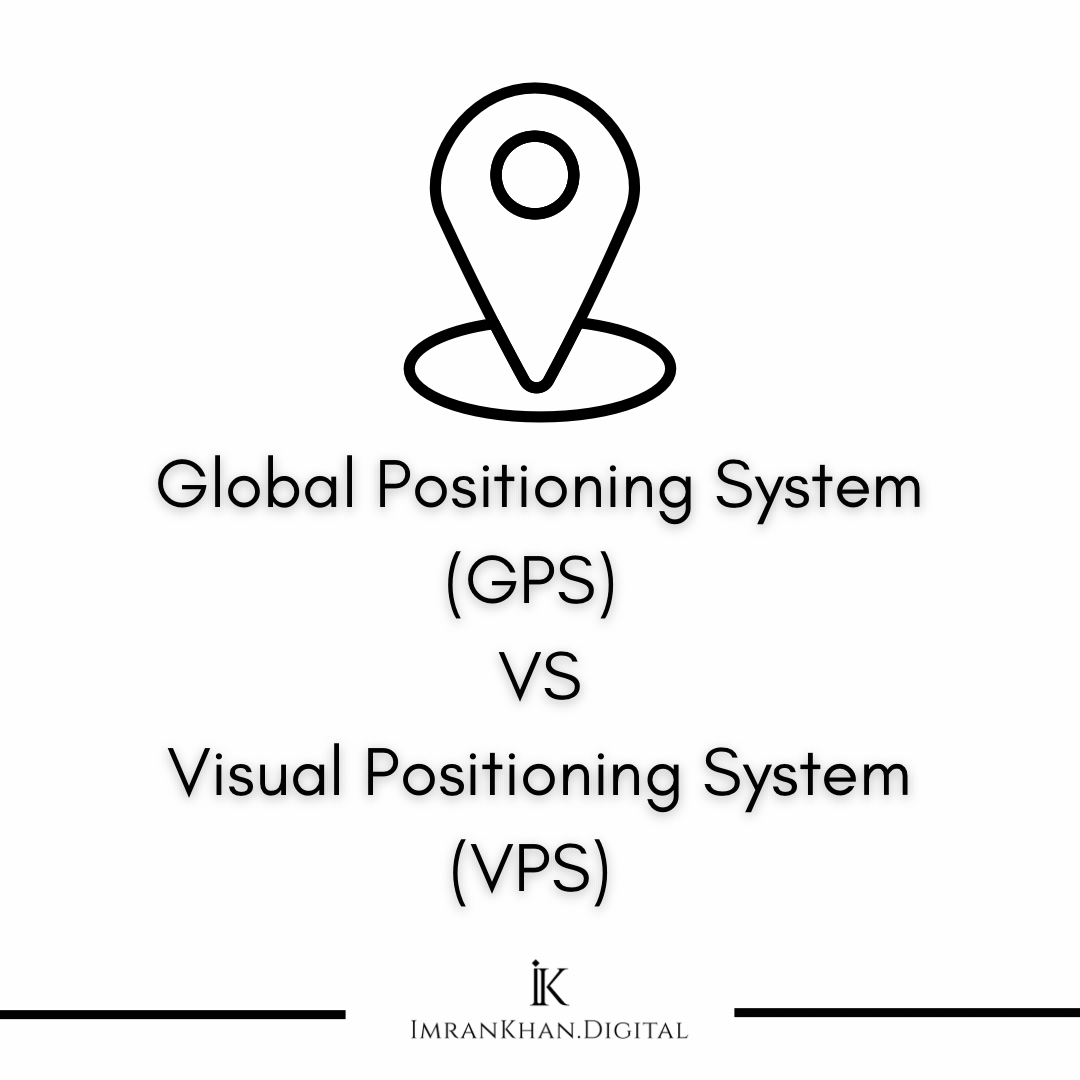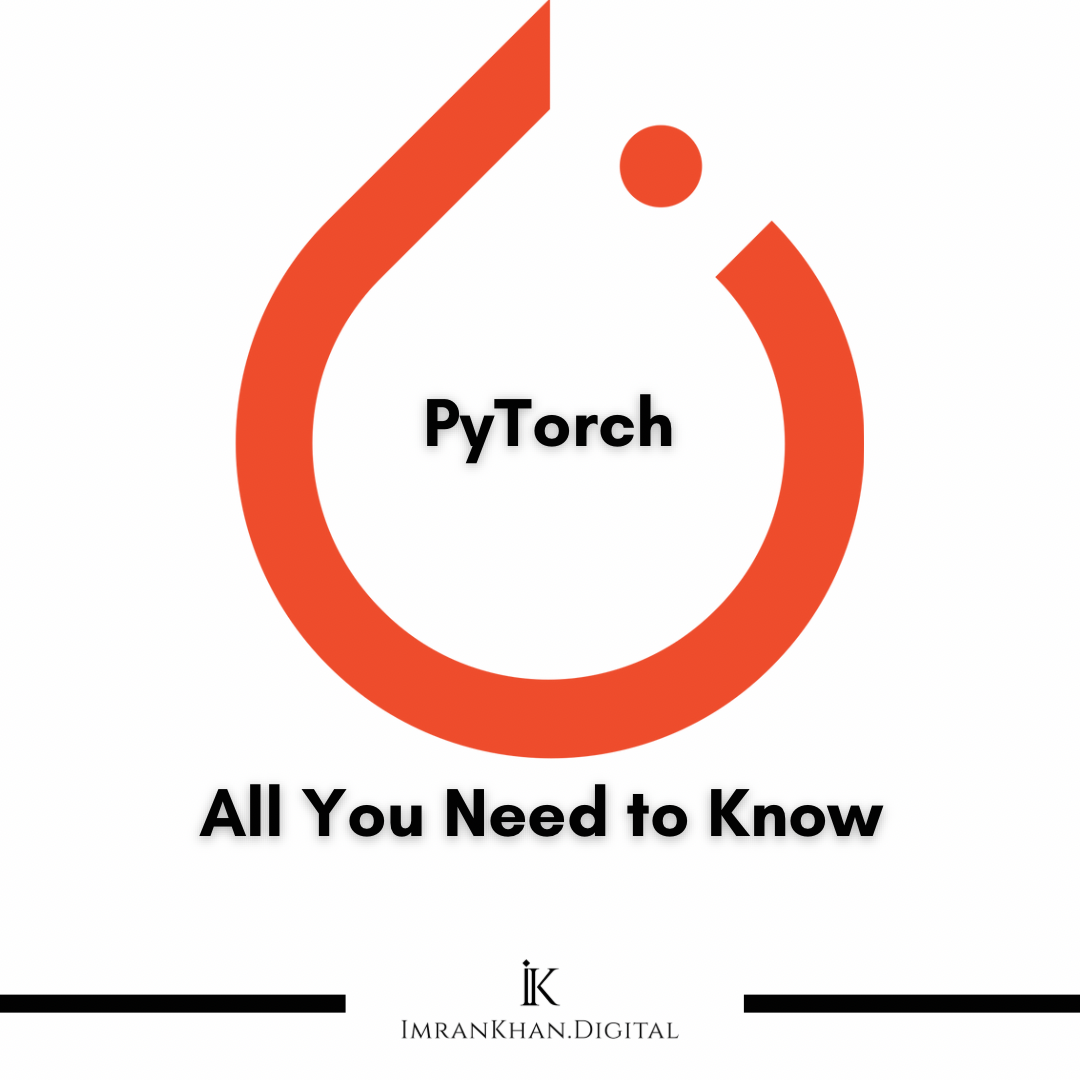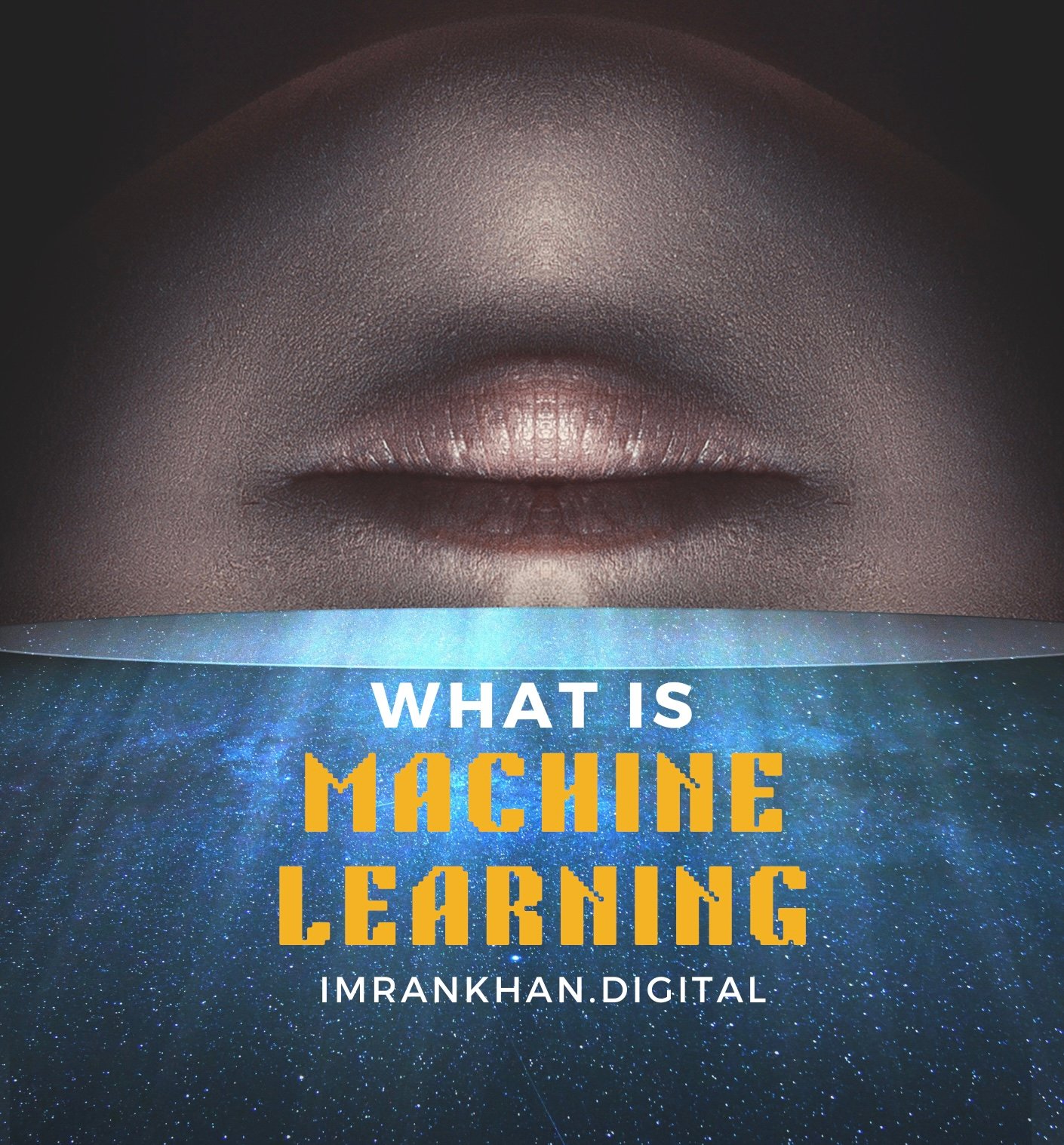Digital marketing is the use of digital tools and platforms to advertise and promote products or services. It involves using technology, such as the internet, mobile devices, display advertising, and other digital media, to reach out to customers in order to generate leads, build brand awareness, and drive sales.
Digital marketing also encompasses SEO (search engine optimization) tactics used to increase website visibility on search engines like Google, Yahoo or Bing. By creating relevant content and optimizing websites for a target audience’s interests, marketers can maximize their potential customer reach. The goal of any digital marketing campaign should be to connect with potential customers in an engaging way that resonates with them emotionally.
The What, Who, Why and How of Digital Marketing for Beginners in 2023
What is meant by digital marketing?
Digital marketing is an umbrella term that refers to the use of various digital channels such as websites, mobile applications, search engines, social media and other online platforms to market products or services. This type of marketing relies on utilizing the internet as a platform to reach a large audience of potential customers.
Digital marketing strategies may include pay-per-click (PPC) advertising, content marketing, influencer marketing, email marketing and more. These techniques are used in combination to target audiences, increase website traffic and ultimately generate leads and conversions.
What does digital marketing do?
Digital marketing is a form of marketing that involves using digital channels to promote a brand or product. It covers a wide range of tactics, including search engine optimization, content creation and distribution, website design, pay-per-click advertising, social media marketing, email marketing, and more.
The goal of digital marketing is to drive leads and sales while increasing brand awareness among your target audience. It also provides businesses with data and analytics on how effective their campaigns are at reaching their intended audiences and helping them achieve their desired outcomes.
Digital marketing can be extremely powerful for businesses if used correctly – it enables you to connect with potential customers at scale and cost-effectively build relationships with them.
What is digital marketing for beginners?
Digital marketing is the use of digital technology and online platforms to promote and market products or services. It has become a vital part of modern businesses’ success strategies. Digital marketing for beginners can be daunting but it is essential to learn if you want to compete in today’s ever-changing digital world.
What Is Digital Marketing?
Digital marketing is the process of using digital tools such as websites, search engines, social media, and email campaigns to reach customers and prospects with relevant content that drives conversions. With digital marketing, you have more control over your message and its delivery than ever before.
Types Of Digital Marketing:
Digital marketing involves several types of activities including search engine optimization (SEO), content marketing, paid search, display advertising, email marketing, and social media campaigns. All of these components are important for achieving successful outcomes in terms of customer engagement and increasing website traffic.
SEO helps optimize a website’s ranking on popular search engines while content marketing helps drive conversions by providing users with valuable information related to the product or service being offered. Paid search campaigns help businesses target customers who are actively searching for products or services that meet their needs.
Display advertising allows companies to showcase their products on websites with large audiences which helps them increase brand visibility. Email campaigns are effective at driving user action such as clicks or sales through personalized messages sent directly to individual inboxes.
Finally, social media campaigns can be used to engage customers by providing exclusive deals and creating relationships with potential leads and customers alike.
Why Digital Marketing Is Important For Businesses:
For businesses of all sizes, having a presence in the digital space is increasingly important because most people start their search for goods and services online.
If a business isn’t optimizing its website for mobile devices, using social media correctly, or running targeted ad campaigns – it’s likely losing out on potential customers. Investing in digital marketing allows businesses to access larger audiences than ever before – no matter what size or industry they may be in – giving them an edge over competitors who haven’t adopted similar strategies yet.
Additionally, measuring performance across various channels gives businesses data-driven insights into how well their campaigns are performing so that adjustments can be made quickly if needed to maximize results even further.
Overall, digital marketing is an essential tool for businesses looking to succeed in the modern world – especially those targeting consumers who primarily go online when looking for information or purchasing decisions.
What is the main role of digital marketing?
The Main Role of Digital Marketing
Digital marketing plays a critical role in today’s world. It has been instrumental in connecting businesses and consumers, creating opportunities for brand promotion, driving sales growth, and much more. Its purpose is to create, promote, and distribute content that engages users and drives business results. Here are some of the key ways digital marketing contributes to business success:
1. Building Brand Awareness: Digital marketing enables businesses to reach their target audience through multiple channels. Through creative strategies such as search engine optimization (SEO), social media campaigns, email campaigns, influencer marketing, and more, companies can create visibility for their brands online and boost awareness about their products or services.
2. Generating Leads: One of the primary objectives of digital marketing is to generate leads for businesses. By using techniques such as SEO and content creation, marketers can create interest in their products or services among potential customers, increasing the chances of turning them into paying customers.
3. Enhancing Engagement: Social media is an important platform for engagement with existing and potential customers alike. Through social media platforms like Twitter, Facebook, Instagram, YouTube, etc., businesses can increase customer engagement by interacting with their audience in a personal manner.
4. Improving Conversion Rates: Conversion rates refer to the rate at which visitors become customers after they view an ad or landing page. Digital marketing helps to optimize conversion rates by creating targeted campaigns that appeal directly to potential customers’ needs and desires – thus increasing the chances that they will convert into paying customers.
5. Analyzing Data & Insights: One of the great benefits of digital marketing is that it allows marketers to measure performance across all campaigns so that insights can be gleaned from this data to help optimize future campaigns for better results. Marketers can use analytics tools such as Google Analytics to monitor website traffic trends over time and identify which strategies work best for their business goals.
In conclusion, digital marketing plays a pivotal role in helping businesses achieve success in today’s market – by enabling them to reach new audiences online, drive leads and conversions, enhance customer engagement levels, and track performance metrics effectively.
What is internet marketing?
Internet marketing is the use of digital channels and technologies to promote or market products and services to customers and businesses. It is an essential part of any modern business strategy, as it provides an effective way for companies to reach their target audience in an interactive manner.
Internet marketing can involve a variety of tactics such as content creation, social media marketing, email campaigns, pay-per-click (PPC) advertising, search engine optimization (SEO), display advertising, influencer marketing and much more. By utilizing these strategies together, companies can create powerful marketing campaigns that engage customers while generating new leads and sales.
What is a digital marketing strategy?
Digital marketing strategies – Step by step guide
Understanding the Basics:
A digital marketing strategy should begin with understanding your target audience’s wants, needs, and buying behaviors. Knowing who you’re trying to reach can help you tailor your messaging to their interests and preferences, leading to higher engagement levels. Additionally, it’s important to be aware of current industry trends and the competition within the field so that you can adjust your strategy accordingly.
Choosing Platforms:
Choosing the right platform is essential for any successful digital marketing strategy. You want to choose platforms where your target audience already spends time, or those that are gaining popularity among users. Your goal should be to identify platforms where you can get the most reach while also getting in front of new people who may become interested in what your business has to offer.
Creating Content:
Once you have chosen which platforms you want to focus on for your digital marketing strategy, it’s time to start creating content for them. Quality content should include topics that are relevant to your audience, helpful advice about your product or service offerings, creative visuals, videos and much more. Quality content will drive more people to engage with your brand and build trust over time with potential customers.
Evaluating Performance:
The final step in developing a successful digital marketing strategy is evaluating its performance regularly so that you can make necessary adjustments along the way. This evaluation process allows you to track important metrics such as engagement levels, conversion rates, website visits, leads generated etc., so that you can understand what is working and what isn’t when it comes to reaching out to potential customers online.
What are the categories and methods of digital marketing?
Digital marketing can be broken down into a few distinct categories:
#Social Media Marketing
Social media is an increasingly important part of digital marketing, allowing businesses to connect with their customers and promote their products or services in an interactive way. Platforms like Facebook, Twitter, LinkedIn, Instagram, and Snapchat are just a few of the many tools available for businesses to utilize when creating and executing their digital marketing strategy.
#Search Engine Optimization (SEO)
Search engine optimization is a key element of digital marketing that helps businesses rank higher in search results and increase website visibility. This involves using keywords in content, creating high-quality links, optimizing page titles and descriptions, improving page load times, and making sure your website is accessible across multiple devices.
#Pay Per Click (PPC) Advertising
PPC advertising involves running campaigns through search engines or social networks where you pay for each click generated by the ads. With this type of digital marketing approach, businesses can target specific audiences with carefully crafted ad copy that can potentially drive more sales or leads.
#Content Marketing
Content marketing involves creating valuable content such as blogs, articles, eBooks, podcasts, infographics, webinars, etc., which helps establish authority in your field and helps your target audience learn more about your products or services. Content can also help boost SEO rankings when optimized properly.
#Influencer Marketing
Influencers are individuals with a large online following who can be leveraged by businesses to spread their message and grow awareness around their products or services. Businesses will typically reach out to these influencers in order to have them promote their product or service across various channels such as blogs or social media sites like Instagram or YouTube.
#Video Marketing
Videos have become increasingly popular over the years due to platforms like YouTube and other streaming services like Netflix or Hulu. Video content allows businesses to present their message in a creative way while also reaching potential customers through targeted advertisements placed on certain videos related to their product/service/industry.
What are the digital marketing metrics?
Digital marketing metrics refer to the various measurements used to track a digital marketing campaign’s success. From website visits and email open rates to lead conversions and return on investment (ROI), each metric is an important part of gauging the effectiveness of your digital strategy.
In order to truly maximize ROI, marketers must understand the value that different digital marketing metrics provide and how they work together.
Key Digital Marketing Metrics
Website Visits: One of the most important metrics to track when it comes to a digital marketing campaign is website visits. The number of people visiting a company’s website can help gauge interest in the brand, its products and services, as well as inform decisions about where additional investments should be made in terms of design or content.
Email Open Rate: Understanding how successful email campaigns are at engaging with potential customers can help you determine which content works best for different audiences. Email open rate is a key metric for measuring email performance and understanding if subscribers are interested in your message.
Lead Conversion: Lead conversion is also an important metric when it comes to digital marketing success. By tracking how many leads convert into paying customers, marketers can better understand their campaigns’ effectiveness in driving actual revenue.
Return on Investment (ROI): A digital marketing campaign’s ultimate goal should always be increasing sales or revenue – ROI measures how effective this increase has been based on initial investments like time, money or resources. It allows marketers to see what channels are working best so they can allocate funds accordingly.
Overall, digital marketing metrics give marketers insights into the success of their campaigns so they can refine their strategies over time. Utilizing multiple data points and focusing on key metrics such as website visits, email open rate, lead conversion and ROI will allow them to make informed decisions that help improve customer acquisition and increase revenue.
What are the types, channels and examples of digital marketing?
It includes several different types of marketing such as content marketing, email marketing, social media marketing, search engine optimization (SEO), display advertising, influencer marketing, video production and more.
Content Marketing: Content marketing involves creating and sharing high-quality content to draw customers to your website. Content can include articles, blog posts, infographics, ebooks, whitepapers and other pieces of written or visual content that offer valuable information or insights to potential customers.
Email Marketing: Email is a great way to reach out to existing customers and build relationships with new ones. Through email campaigns you can keep customers informed about new products or services you’re offering and use it to send newsletters or announcements about events or promotions.
Social Media Marketing: Social media has become a powerful tool for businesses to reach their target audiences and promote their brands. Companies can post updates on social networks such as Twitter, Instagram, Facebook and LinkedIn which allows them to share interesting stories and gain followers in the process.
Search Engine Optimization (SEO): SEO is all about helping search engines find relevant web pages when people are searching for specific keywords. By optimizing your website’s content you can improve its visibility in the search engine results pages (SERPs). This helps ensure that more potential customers will find your website when they are searching online.
Display Advertising: Display advertising refers to the ads shown on websites or apps through various ad networks. They can come in various forms such as text-based ads, images, videos or interactive content that links users directly back to your website or app page.
Influencer Marketing: Influencer marketing involves partnering with influential people who have a large following on social media platforms like Instagram, Twitter or YouTube in order to market products or services. This form of digital marketing is becoming increasingly popular because it gives brands an opportunity to leverage an influencer’s platform and reach out to their existing audiences who might not have otherwise heard of them.
Video Production: Video production has become one of the most popular ways for businesses to get their message out there in a visually appealing way that resonates with their target audience. Videos allow businesses to capture attention more effectively than any other type of digital marketing mediums by creating visuals that stand out from traditional methods of communication such as print ads or emails.
What are the pillars of effective digital marketing?
Digital marketing is an important aspect of any business’ success in the modern world. With so many channels to reach potential customers, it is essential to know the best way to maximize a digital presence. There are four key pillars to effective digital marketing: content, search engine optimization (SEO), user experience (UX), and social media marketing (SMM).
Content:
Content creation is key when developing an online presence. Writing blogs, creating videos, and crafting compelling social media posts are all effective ways to attract viewers and create brand recognition. It is also important for content creators to pay attention to current trends in their respective fields. Doing so can make a post go viral and generate massive traffic for a website or page.
Search Engine Optimization (SEO):
By optimizing your website’s search engine rankings, businesses can ensure they are found easily by customers on major search engines such as Google and Bing. To do this, website owners need to properly incorporate keywords into their webpages and write compelling titles and meta descriptions for them. Additionally, creating backlinks from high-authority websites is also very beneficial in increasing visibility and helping move up in the SERPs.
User Experience (UX):
A user’s experience while navigating through a website plays a significant role in their perception of a business or brand. As such, having an easy-to-navigate site with appealing visuals is necessary for positive UX design. Additionally, focusing on mobile-friendliness and responsiveness can further increase engagement with customers on the go who prefer accessing content via smartphone or tablet devices.
Social Media Marketing (SMM):
Having a strong presence on social media platforms has become increasingly crucial for brands hoping to expand their audience reach. Building relationships with customers by responding promptly to inquiries as well as posting relevant content that adds value is integral for businesses seeking long-term success via social media campaigns. Utilizing influencers with high numbers of followers can be especially helpful for introducing your product or service to more people.
What is inbound marketing vs digital marketing?
In today’s digital world, there are two main marketing strategies: inbound marketing and digital marketing. Inbound marketing is a strategic approach to advertising which focuses on getting the customer to come to you. This is usually done through creating content that will draw customers in, such as blogs or articles, with a focus on organic growth.
Digital marketing involves using more traditional tactics such as paid advertising campaigns on social media platforms and search engines. It is a more direct form of advertising and involves making an effort to target potential customers with specific messages.
The biggest difference between inbound and digital marketing lies in the intention behind the action. Inbound is all about attracting potential customers organically, while digital requires putting some effort into finding them and persuading them to convert.
With inbound, the idea is that once customers find you they will stay; whereas with digital, customers may come and go quickly depending on what they see or experience when they first land on your page or advertisement. In conclusion, both approaches can be very effective if implemented correctly and can result in success for your business goals.
How to do digital marketing?
Digital marketing is an essential component of any successful business today. As more and more people turn to the internet for information and services, businesses need to take advantage of digital marketing strategies in order to reach their customers. Here are some steps on how to do digital marketing effectively:
1. Define Your Target Audience: The first step to any successful digital marketing campaign is to define your target audience. This includes researching potential customer segments, analyzing their needs and interests, and tailoring content to those audiences.
2. Identify Digital Marketing Channels: Once you have identified your target audience, it’s time to choose which channels will be most effective for reaching them. Popular channels include email, social media platforms such as Facebook and Twitter, display ads, and search engine optimization (SEO).
3. Set Goals & Measure Performance: Establish clear goals for your campaigns and track the performance of each one over time using analytics tools like Google Analytics or Kissmetrics. This will help you optimize your efforts by determining what’s working and what’s not so you can make adjustments as needed.
4. Develop Engaging Content: Content is key when it comes to digital marketing, as it helps build trust with your audience and boost engagement with your brand online. Try creating engaging videos, infographics, podcasts, webinars or blog posts that provide useful information while showcasing the unique qualities of your product or service.
5. Test & Optimize Your Strategies: Constantly test different strategies for reaching new audiences, refining existing campaigns, targeting specific keywords in search engine queries, testing A/B variations of content pieces or advertisements—and monitor results regularly. Adjustments should be made based on these tests in order to ensure maximum efficiency from your campaigns going forward.
Following these five steps will set you up for success when it comes to digital marketing for your business!
How to implement digital marketing?
Implementing digital marketing requires understanding various components that come together to create a successful strategy. It’s important to note that all components of digital marketing should be used in conjunction with each other, as one element can easily affect the success of another. Here are some key elements to consider when implementing a digital marketing strategy:
Research and Planning: Research your target audience and current industry trends. Understand what resonates best with customers and design an appropriate strategy for engaging them through different online channels.
Website Design: Ensure your website is user-friendly and optimized for search engine ranking. This includes using keywords throughout the website content and ensuring fast page load times.
Content Marketing: Develop high-quality content that offers value to customers such as informative blog posts, video tutorials, and other helpful information related to your product or service. This type of content should be shareable across various social media channels to reach new customers.
Social Media Marketing: Utilize social media channels like Facebook, Twitter, YouTube, Instagram, LinkedIn, etc., to interact with your customer base. Social media also allows you to get feedback from customers quickly which can help inform your marketing decisions going forward.
Paid Advertising: Investing in targeted paid advertising on platforms like Google Ads and Bing Ads will allow you to increase visibility and reach potential customers faster than organic search engine optimization efforts alone.
Email Marketing: Regularly communicate with customers via email campaigns promoting offers or services available at your business. Make sure emails are personalised for maximum effectiveness.
Analytics: Use analytics tools such as Google Analytics or Adobe Analytics to measure the performance of your digital marketing efforts and make necessary adjustments as needed.
What are the KPIs in digital marketing?
Digital marketing is a rapidly growing field and as such, requires performance measures to track success. These metrics are referred to as key performance indicators, or KPIs. By measuring various components of digital marketing campaigns, marketers can effectively assess their effectiveness and adjust accordingly. The following are some common KPIs used in digital marketing:
Lead Generation:
This KPI is the most important indicator of digital success and involves tracking the number of leads generated through digital channels. This metric provides an indication of how effective the campaigns have been at engaging with prospective customers and whether additional efforts are necessary.
Conversion Rate:
Conversion rate measures the number of visitors that convert into customers after taking a desired action. It can help marketers identify opportunities for improving content, calls-to-action, or customer service practices to improve user experience and increase conversions.
Click-Through Rate (CTR):
Click-through rate measures how many clicks a website receives from users. It helps marketers gauge which pieces of content are resonating most with readers and allows them to adjust their strategies accordingly.
Social Engagement:
Social media engagement metrics measure how well a brand is engaging its followers on social media platforms. These metrics include likes, shares, retweets, comments, etc., which all indicate whether users are finding value in your content or not. This KPI allows marketers to see what types of content perform best and what needs improvement for more effective social media presence.
Reach & Impressions:
These KPIs measure the total reach and impressions that digital campaigns have achieved on different platforms. This includes website visits, impressions across social networks, or video views. These metrics help marketers understand their overall reach online as well as which platforms they should focus on to maximize visibility.
How to measure digital marketing success?
Measuring digital marketing success is critical for businesses, large and small. While the benefits of digital marketing are significant, understanding how successful your campaigns have been can be challenging. The good news is that with the right strategies and techniques, measuring the success of your digital marketing efforts is simpler than ever. Here are a few tips to help you accurately measure digital marketing success:
Set Clear Goals: Before launching any type of campaign, it’s essential to define your goals. Think about what you want to achieve in terms of increased website visits, leads, or sales, and then set targets accordingly. This will provide a reference point to measure success against later on.
Track Your Progress: You’ll need to track how well each component of your digital marketing strategy performs in order to accurately gauge its success. There are numerous tracking tools available that allow you to see which sources generate the most traffic and conversions so you can optimize campaigns accordingly.
Analyze Results: Taking a deep dive into analytics will give you insights into customer behavior and how successful each campaign has been. You should look at metrics like page views, time spent on-site, clicks, shares, conversion rates and more for valuable data points that help indicate overall performance.
Monitor Trends: By monitoring trends in real-time through Google Analytics or other tools you can spot opportunities or changes in customer behavior as they happen and adjust your approach quickly for optimal results.
Gather Feedback: Another great way to assess your digital marketing effectiveness is by collecting feedback from customers. Surveys can be used to understand what drives them to purchase a product or service, allowing you to focus your efforts more precisely on target audiences that yield better ROI for your business.
By taking the time to set clear goals, track progress and analyze results using a variety of methods, businesses can easily measure their digital marketing success and make necessary adjustments where needed for optimal performance over time.
10 reasons: Why digital marketing is important?
Digital marketing is becoming increasingly important in today’s digital age. Here are 10 reasons why digital marketing is so essential:
– Digital marketing can be incredibly cost effective compared to traditional methods such as television and print ads.
– It allows businesses to target their desired audience more effectively, increasing their chances of making a sale.
– Through the use of analytics and tracking, businesses can track how effective their campaigns are, allowing them to adjust or modify as needed.
– Digital marketing is faster and easier than ever before with platforms like social media, which allow for instant messaging and updates.
– By targeting potential customers with personalised ads, companies have an increased chance of making a sale.
– Search engine optimisation (SEO) allows companies to appear higher on search engine results pages, leading to greater visibility and potential sales opportunities.
– It offers the ability to easily measure success and ROI from campaigns.
– Email marketing gives companies the opportunity to build relationships with their customers by providing helpful information in newsletters or exclusive offers for those subscribed.
– Businesses can build brand recognition through digital channels such as content marketing, where relevant and informative content is provided on various platforms including blogs, video platforms and websites.
– Finally, businesses have access to powerful data which provides insights into consumer behaviour; this helps them develop targeted strategies based on customer needs and preferences.
Advantages of digital marketing
Digital marketing offers several advantages over traditional marketing. These include:
– A much wider reach: Digital marketing has the potential to reach far more people than traditional methods such as TV or print advertising, which can only target a limited area.
– More cost-effective: Compared to traditional advertising methods, digital marketing can be relatively inexpensive and easy to measure, allowing businesses to accurately track their ROI and make sure their budget is well spent.
– Targeting and personalization: Digital marketers can tailor campaigns to specific audiences based on demographics, interests, and behavior, enabling companies to get the most out of their investments by targeting the right people with relevant content.
– Real-time results: With digital marketing it is possible to monitor and adjust campaigns in real time as opposed to traditional advertising where changes take longer and may require costly research.
– Easier customer feedback: Through analytics tools and other means, companies are able to collect direct customer feedback that helps them shape their marketing strategies accordingly.
What is media marketing?
Media Marketing is the process of using various forms of media such as television, radio, digital, print, and other outlets to promote products and services. It is an essential part of any business’s overall marketing strategy, as it helps to reach target audiences quickly and cost-effectively.
#What is Media Marketing?
Media Marketing is a type of advertising that uses different types of media to reach potential customers. These channels can include television commercials, radio ads, print advertisements, outdoor billboards, digital signage and websites. With so many different mediums available for advertising campaigns today, Media Marketing provides businesses with an effective way to promote their products and services to the right audience in an efficient manner.
#Benefits of Media Marketing
One of the biggest advantages of using media marketing is that it can help businesses gain greater visibility and brand recognition among their target audiences. By investing in effective media campaigns businesses can ensure that their messages are reaching a larger portion of the population than if they relied on traditional forms of advertising alone. In addition, media marketing can provide a more cost-effective way to market compared to other options like direct mail or newspaper ads.
#Measuring Media Effectiveness
Another key benefit to using media marketing is that it can help marketers measure the effectiveness of their campaigns over time. This can be done through tracking key metrics such as click-through rates and views or by running focus groups or surveys with viewers. By understanding how viewers engage with their advertisements businesses can tweak their messaging or use alternative tactics to maximize results.
Overall, media marketing provides companies with a great way to get noticed in today’s competitive market while keeping costs low. When used properly, these strategies can prove highly effective in boosting sales and profits for businesses across all industries.
What are the types of media marketing?
Media marketing is an effective way of promoting and publicizing products, services, or brands. It encompasses various types of media outlets such as television, radio, digital media, newspapers, magazines, and outdoor advertising. Each type of media has its own advantages and disadvantages.
Types of Media Marketing
Print Advertising:
Print advertising includes any advertisement that appears in printed material such as magazines, newspapers, and billboards. This form of media marketing is ideal for targeting a local audience as it can reach people in the surrounding area quickly and easily.
Television
Television is a powerful tool for marketers to reach potential customers on a large scale. TV ads have the advantage of high visibility since they are usually aired during popular programming with high viewership ratings. On the other hand, creating and producing TV commercials can be expensive and time-consuming.
Radio
Radio advertisements allow businesses to target a specific geographic area at a lower cost than TV commercials. In addition, radio advertisements are often interactive as listeners can call in for promotions or respond to messages in real-time. However, due to limited ad slots available on each station, competition is fierce when it comes to acquiring airtime.
Digital Media
Digital media provides opportunities for businesses to get creative with their messaging by using multiple formats such as videos, blogs, podcasts, email campaigns, banner ads, and social media posts. This type of media offers advertisers the ability to target their audience based on demographics and interests. However, reaching users can be difficult if the content does not resonate with them or is deemed irrelevant or annoying by consumers.
Newspapers and Magazines
Print ads remain popular with many companies despite the prevalence of digital advertising options today. Newspapers offer advertisers regional reach while magazines provide a more niche audience that has already shown interest in certain topics. Despite these benefits though print advertising can be costly especially in regards to color advertisements.
Outdoor Advertising
Outdoor advertising uses physical mediums like billboards and transit vehicles like buses or subways to deliver brand messages to a mass audience quickly. The main benefit is that outdoor ads cannot be avoided like some digital ads which allows for more impressions with minimal effort on behalf of advertisers. Furthermore these messages have long staying power since they are often displayed for months at a time depending on the length of the contract agreement. On the other hand outdoor ads require upfront costs since there are usually design fees involved in production prior to any installations taking place
In conclusion, there are several different types of media marketing available to businesses today including print advertising, television and radio ads, social media marketing, email marketing, and search engine optimization (SEO). All of these strategies have unique advantages depending on the goals of your company so it’s important to consider which method best suits your needs before launching any campaigns.
What skills do digital marketers need?
In the age of digital marketing, there are a wide variety of skills and tools that successful digital marketers need in order to excel. A few key areas that every digital marketer should master include content marketing, SEO, email marketing, web analytics, and social media management.
Content Marketing:
Content marketing involves creating useful and informative content for potential customers or readers in order to create engagement and build brand awareness. This could involve blog posts, ebooks, podcasts, or any other type of content that provides valuable information to an audience.
SEO:
Search engine optimization (SEO) is the practice of optimizing web pages in order to improve visibility in organic search engine results. This requires an understanding of keyword research and best practices for implementing keywords throughout a website’s pages as well as creating quality backlinks.
Email Marketing:
Email marketing is another important aspect of digital marketing. This involves creating effective email campaigns designed to capture the attention of the reader while providing relevant and valuable information that can lead to conversions or purchases. An understanding of segmentation strategies as well as crafting personalized emails are essential skills for any successful digital marketer.
Web Analytics:
Web analytics are also critical for digital marketers because it helps them understand user behavior on their website so they can better tailor their messages for specific audiences and measure performance. Understanding basic data analysis such as page views, clicks, bounce rates, time on page, etc., is crucial for gaining insights into what works and what doesn’t work for your audience.
Social Media Management:
Finally, having knowledge about how to use different social media platforms is also essential for success in digital marketing today. Understanding how to craft posts tailored for different platforms as well as managing customer service interactions will help ensure a positive presence across all channels.
Which skill is in demand in digital marketing?
Digital marketing is a booming industry that offers many opportunities for people looking to hone their skills. One skill in particular that is becoming increasingly in demand within the digital marketing world is content creation and optimization.
With so much of today’s marketing being done through social media, search engine optimization (SEO) and website content, creating effective content is more important than ever before.
Content Creation
Creating content that engages users, communicates the desired message and generates leads is key for success in the digital marketing space. To create great content, one must understand how to write effectively for various platforms as well as how to use data-driven insights to craft content with a focus on conversions. Knowing the latest trends and strategies for effective content creation is a must for anyone who wants to succeed in digital marketing.
SEO Optimization
SEO is a necessary element of any successful digital marketing campaign, as it helps ensure visibility online by using strategic keywords and other tactics such as meta tags and backlinks. To make sure your website ranks well on search engine results pages (SERPs), it’s important to have a strong understanding of keyword research, link building, on-page SEO tactics, off-page SEO strategies and analytics tracking tools.
Copywriting
The ability to craft copy that compels readers to take action is an essential part of any digital marketer’s arsenal. Crafting captivating headlines, telling engaging stories with language, formatting text properly and understanding user behavior are all key components when it comes to effective copywriting.
Understanding the principles of persuasive writing and honing this skill can be extremely beneficial for those wanting to break into digital marketing.
In conclusion, there are numerous skills necessary for success in the world of digital marketing but if there’s one that stands out above all others it’s content creation and optimization. Knowing how to craft engaging copy, optimizing websites for search engines and utilizing data-driven insights are just some of the skills that will make you invaluable within the field of digital marketing.
Is digital marketing a good career?
Digital marketing is an excellent career option in the current technological age. With the use of various digital platforms such as social media, search engine optimization (SEO), email campaigns and more, businesses are looking for skilled professionals to help them achieve their online presence goals.
With its growth rate and a projected need of nearly three million new digital marketing professionals by 2020, this field has vast potential. In addition to providing lucrative job opportunities, it also offers many unique challenges that are exciting and rewarding.
As long as you have the passion and commitment to learn, understand and develop yourself with this evolving field, digital marketing can provide great success in your career.
What are the different designations and roles in digital marketing?
Digital marketing is an important tool for businesses to engage customers and promote their services. There are various designations and roles in digital marketing that help companies to reach their target audiences. The main roles can be broken down into content creators, website developers, SEO professionals, email marketers, social media experts, paid media specialists, data analysts and more.
Content Creators:
Content creators are responsible for creating quality content to capture the attention of users and make them take desired actions. They create webpages, blogs, videos, graphics etc. that convey a message effectively to the target audience.
Website Developers:
Website developers design attractive websites for businesses that not only appeal to potential customers but also improve the visibility of a website on search engine rankings. They focus on developing fast-loading websites that include dynamic features like customizations, checkout pages etc.
SEO Professionals:
Search Engine Optimization (SEO) professionals are in charge of improving the ranking of a website on popular search engines like Google or Bing by utilizing effective strategies such as keyword research and link building techniques. By using effective SEO tactics, they increase organic traffic to a website which can potentially lead to higher sales conversion rates.
Email Marketers:
Email marketers send automated emails that serve as an effective means of direct communication with customers. They segment customer lists according to demographic characteristics or preferences in order to create highly personalized campaigns that attract people’s attention and convert them into leads or paying customers.
Social Media Experts:
Social media experts leverage platforms such as Twitter, Instagram or Facebook to promote services and products among potential customers by posting updates regularly and responding quickly to queries posed by users. Through proper management of these accounts, they create engaging content which results in improved brand awareness among online users.
Paid Media Specialists:
Paid media specialists use online advertising channels such as Google Adwords or YouTube Ads to create ads that appear when someone searches for relevant terms on those sites. By doing so, they drive high-quality traffic to websites resulting in increased brand recognition and ROI for businesses over time.
Data Analysts:
Data analysts track the performance of digital marketing efforts across various channels through the use of analytics tools such as Google Analytics or Mixpanel. Their insights provide valuable information about user behaviour which helps brands determine how well their campaigns are performing and optimize them accordingly for improved returns in the future.
Final words
The future of digital marketing is looking more and more promising with each passing day. With advancements in technology, companies have been increasingly turning to digital channels to reach their target audiences and promote their products.
Furthermore, these digital platforms have been opening up opportunities for customer targeting, personalized content delivery, and interactive tools – giving brands an advantage over traditional marketing methods. These new technologies provide a level of efficiency which enables marketers to gain deeper insight into what works best for them. All in all, this trend towards the increasing use of digital marketing is showing no signs of slowing down.
























